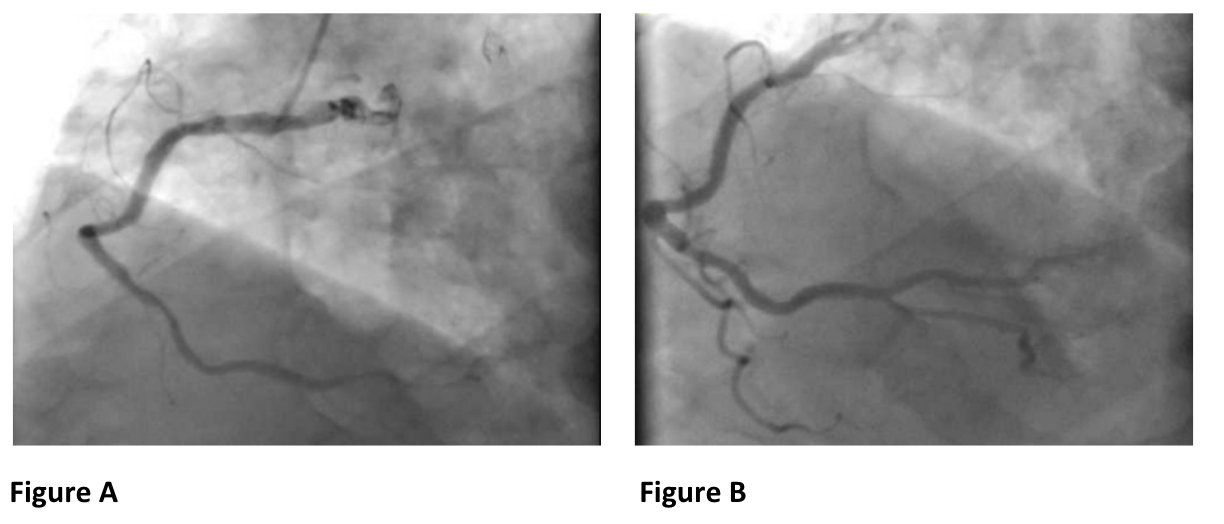Final ID: Sa4078
A Refractory Case of Prinzmetal’s Angina Treated with VATS Sympathectomy
Abstract Body (Do not enter title and authors here): CASE DESCRIPTION: A 74-year-old male with hypertension, hyperlipidemia, coronary artery disease status post PCI, paroxysmal atrial fibrillation, and coronary vasospasm presented with recurrent episodes of chest pain at rest described as substernal, pressure like, 10/10 lasting for a few minutes. The patient was hemodynamically stable upon presentation but had an event of pulseless ventricular tachycardia (VT) requiring shock x 2 (Image 1). The patient was stabilized, and an emergent left heart catheterization showed stable obstructive CAD with diffuse coronary vasospasm responsive to intracoronary nitrates (Image 2). The patient was transferred to the intensive care unit for further management. He had multiple prior presentations for chest pain, with one complicated by a transient hemodynamically unstable high grade AV block (Image 1). Prior work up was also consistent with coronary vasospasm despite being optimally managed on nitrates and calcium channel blockers. Despite medical management the patient had a refractory course with recurrent symptoms. CLINICAL DECISION MAKING: As it was believed that symptoms were likely driven by high sympathetic tone, the patient was intubated and sedated for sympathetic drive suppression. After a multidisciplinary meeting with cardiothoracic surgery and electrophysiology, a decision was made to go for video assisted thoracoscopic surgery (VATS) which was performed successfully. The patient was extubated, had no recurrence of symptoms after, and was offered an implantable-cardioverter defibrillator at discharge for secondary prevention. DISCUSSION: Coronary vasospasm can be life threatening due to transient and acute ischemia driven myocardial injury or arrhythmias. This case highlights the role of VATS sympathectomy in managing severe cases of vasospastic angina that are unresponsive to conventional treatments. Further studies are required to establish the efficacy and safety of this procedure in broader patient populations.
More abstracts on this topic:
Gestational Diabetes Mellitus Impairs Endothelin-1-Mediated Vasoconstriction in Fetal Placental Arteries
Ankenbrand Nils, Brunssen Coy, Fruehauf Alexander, Birdir Cahit, Kopaliani Irakli, Taylor Paul, Morawietz Henning, Hengst Clara, Kolbig Silke Alexandra, Villar Ballesteros Maria De Leyre, Brendel Heike, Carstens Philine, Effenberger Deborah, Mittag Jennifer, Giebe Sindy
A Novel Model of Sustained Hypertension Using an AngII Adeno-Associated VirusShivers Mitchell, Kim Ha Won, Weintraub Neal, Stepp David, Belin De Chantemele Eric, Ogola Benard, Barman Scott, Fulton David, Sellers Hunter, Barris Candee, Brown Zachary, Haigh Stephen, Bridgewater Cody, Ananna Farhana, Menik Ishara M.g., Ogbi Mourad


